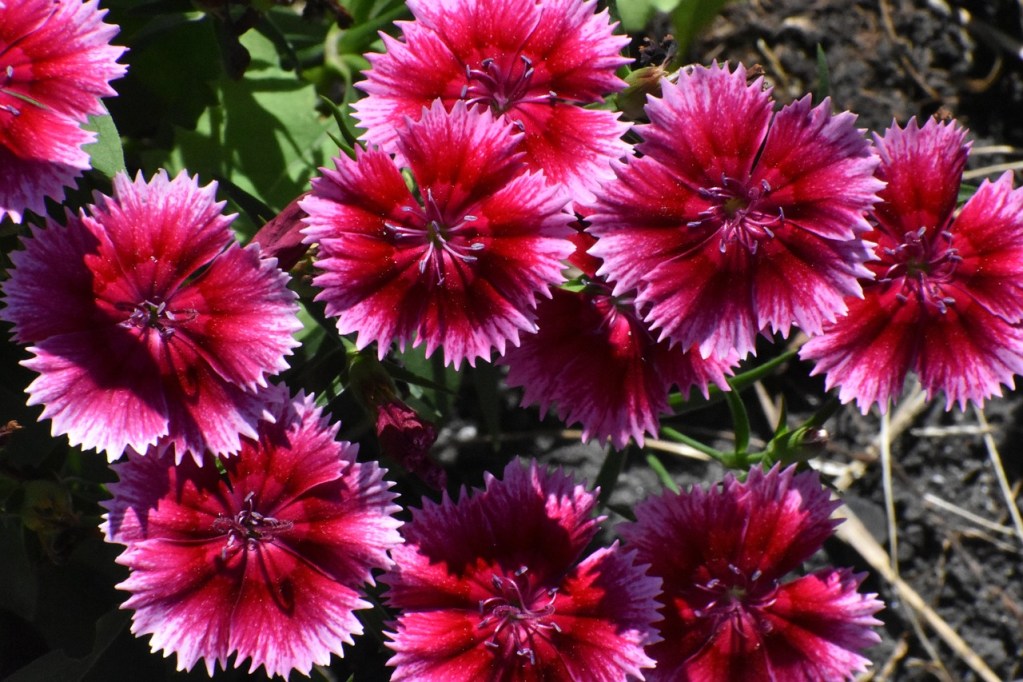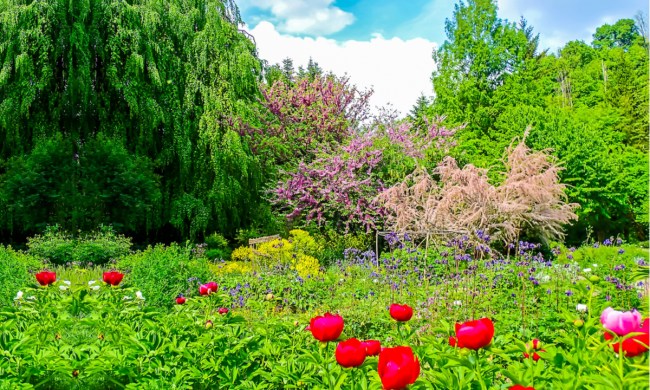Of all the beautiful flowers that bloom in spring and summer, there are few more immediately recognizable than carnations. With their ruffled petals and lovely shades of pink and red, carnations are a bright and cheery addition to any home or garden. Carnations even make stunning cut flower arrangements! If you want to add these lovely flowers to your garden, then this is the care guide for you. We’ll walk you through every step of caring for carnations so that you can enjoy your flowers without worry.

Planting carnations
If you want to grow carnations from seeds, you can start them indoors at any time or plant them outdoors after the last frost has passed. You can plant seedlings and adult plants any time after the last frost and before the first frost.
Choose a planting site with well-draining soil that is airy and rich in nutrients. Mixing compost into the soil before planting your carnations is a good idea. If the soil in your garden is dense or has a lot of clay, then you should consider growing your carnations in pots instead. For potted carnations, regular potting soil will work just fine.
Whether you’re planting carnations in your garden or in a container, make sure they’re in a sunny location. Carnations prefer full sun, but they can tolerate some light shade as well. In hotter climates, planting your carnations where they will receive sun in the morning and light shade in the afternoon can help prevent sunburns and wilting.

Carnation care
Carnations are hardy plants once they’re established, but regular care makes for the best and brightest flowers. Carnations prefer regular watering. Once per week is typically enough, although you’ll need to adjust this during heavy rainfall or heat waves.
Not all carnations need fertilization, but if you think your carnations need a boost, then they’ll be happy to receive a dose of slow-release or controlled-release fertilizer in spring or early summer. Fast-acting fertilizers can cause nitrogen burn or lead to an overabundance of leaves and not as many flowers in carnations, so it’s best to avoid them. Compost is another good choice for carnations.
Deadheading carnations is not strictly necessary, but it does encourage repeat blooming. All you need to do is clip or pinch wilted or faded flowers off of your carnation plant. These flowers can be composted or thrown away, but they can also be dried, preserved, or displayed.

Propagating your carnations
Carnation propagation can be accomplished through three methods: cuttings, seeds, and root division. Propagating carnations through cuttings is the method you might be most familiar with, as many plants can be propagated with this technique. Using a pair of clean gardening shears or scissors, cut a carnation stem that is healthy, a few inches long, and has a few leaves. Once you have a cutting, you can root it in either soil or clean, room-temperature water.
To propagate your carnations by harvesting the seeds, you’ll need to wait until after your carnation blooms and is pollinated. After the flowers have been pollinated, let them dry. Then, harvest the seeds from the dried flowers and store them in a sealed container in a dry, cool place until you’re ready to plant them.
Root division is a slightly more complicated propagation method, but it is also faster. Dig your carnation plant up and gently separate it into multiple sections. Each should have several roots attached. The sections can then be replanted and will grow into separate plants.

Types of carnations to consider
In addition to carnations, look for plants labeled dianthus or pinks. Dianthus is the genus name that carnations fall under, with the botanical name of carnations being Dianthus caryophyllus. They are also called pinks, not after the color, but because the edges of the petals look like they were cut with pinking shears. There are over 300 flowers in this genus, so there are plenty of options to choose from. Here are a few of our favorites.
Sweet William (Dianthus barbatus) flowers in clusters, with several flowers on a single stem. It comes in shades of pink, red, purple, and white, and even has some two-toned varieties. Dianthus Heddewigii is a variety of Chinese pink with unique colors. It has black petals with white or white and pink edges. The fringed pink (Dianthus hyssopifolius) has a delightful shape. The fringes on this flower are longer than other Dianthus plants, giving it the appearance of a jellyfish or star-nosed mole.

Best companion plants for carnations
Carnations grow well with any other plant that enjoys well-drained soil and full sun, but as with all flower gardens, aesthetics are a factor as well. Other dianthus flowers are a great fit, as are roses, verbena, calendula, geraniums, and daisies. Avoid plants that prefer full shade or a more intense watering schedule, such as ferns and orchids, as well as shrubs or trees that could shade or crowd the carnations.
Carnations are classic flowers, and they’re sure to brighten up any home or garden with festive spring colors. Not only are they lovely while growing, but the cut flowers also make terrific gifts for Mother’s Day or any other spring holiday. With so many varieties and colors to choose from, you could fill an entire garden with carnations and never get bored, so why not pick a few and start today?




